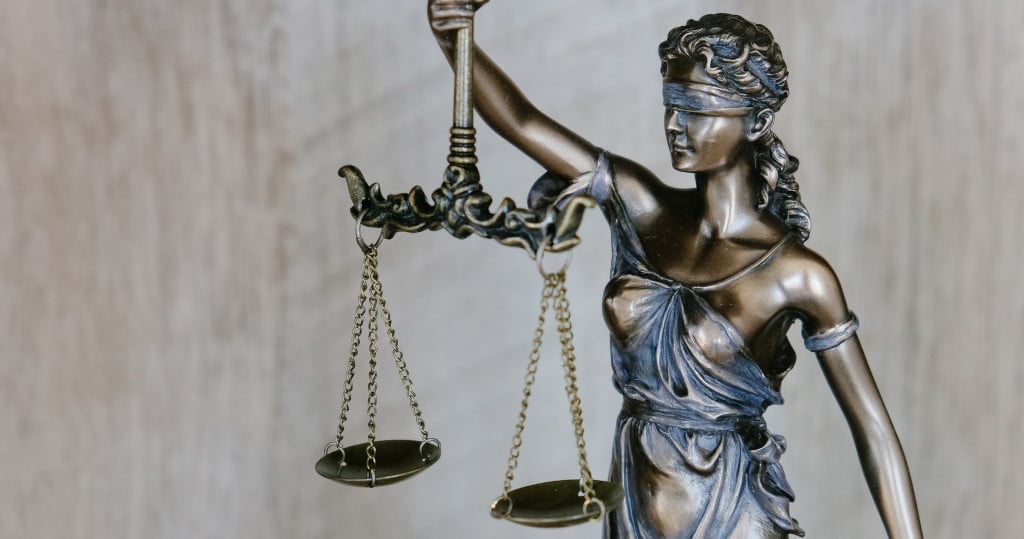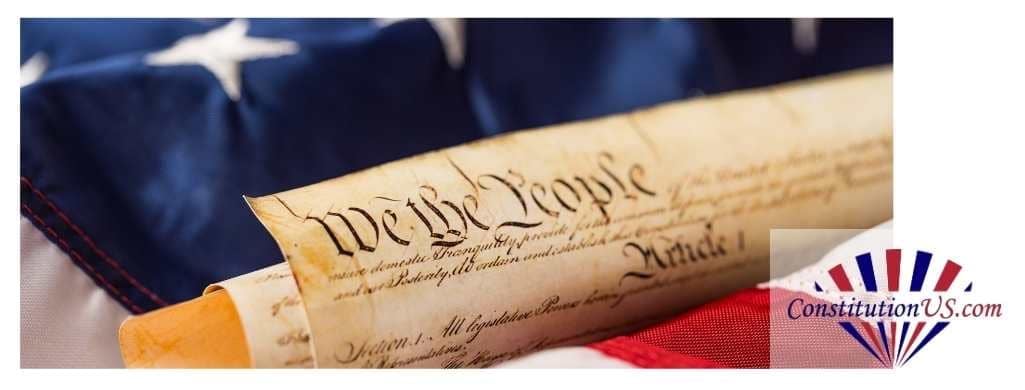The United States Constitution establishes a centralized form of government. Yet, it is also known for distributing powers across three federal branches and across all of the states.
The Constitution provides a political structure that limits government power.
Limited Government and the Constitutional Convention
The Constitution was originally designed to accomplish two primary goals.
The first was to provide a stronger central government than under the Articles of Confederation.
The second was to prevent an abuse of power similar to what had been done by the British monarchy.

The Articles of Confederation were established during the Revolution to form a union among the states. Most of the political power was retained by the states, and the federal government had difficulty with such issues as raising taxes and regulating commerce.
The Constitutional Convention in Philadelphia in 1787 sought to strengthen the federal government. Yet, the framers also wanted to limit the amount of power vested in the federal government. Hence, they adopted a compromise model.
The Constitution and Limited Government
The Constitution created a limited government by using two main forms of separating power. One, the Constitution uses a horizontal separation of powers that distributes power among three branches of the government – the legislative, executive, and judicial branches.

Two, the Constitution relies on a vertical separation of powers. This second form is usually called federalism, dividing power between federal and state governments.
In 1789, the Constitution became law and allowed for a stronger national framework while also avoiding abuse of central power.
The Constitution and the Division of Power
Dividing power within the national government requires a system of checks and balances. In the Constitution are provisions that allow each branch to limit the power of the other branches.
For example, the president has the power to veto a bill passed by Congress. But Congress can also override that veto with a two-thirds majority vote. The House of Representatives has the power to bring impeachment charges against the president.

Still, the Senate is the branch that has the authority to hold a trial to determine if the president will actually be removed from office.
Dividing power between the national and state governments is also part of the Constitution. The concept of federalism with a shared basis of power is the type of government in the United States.
The word federalism is not the Constitution, but our founding document clearly adopted a federalist structure. For example, Article I, Section 2 of the Constitution grants Congress the sole power to levy and collect national taxes.
Yet, the federal government does not have the power to determine state or local sales or income tax rates.
The Constitution and Federalism
Federalism is central to defining limited government in the Constitution. On the one hand, federalism means the central government can only carry out specific actions. On the other hand, it also means the federal government is restricted from roles and activities.

Article I, Section 8 of the Constitution is known as the commerce Clause. This clause grants the federal government sole authority over interstate commerce and commerce between the United States and other nations. Yet, state law prevails for commerce conducted within a state or intrastate commerce.
Article VI, Clause 2 of the Constitution is known as the Supremacy Clause. This clause indicates that the Constitution and federal laws associated with it are the supreme law of the land. This means that states cannot interfere with areas deemed as federal Constitutional powers.

Get Smarter on US News, History, and the Constitution
Join the thousands of fellow patriots who rely on our 5-minute newsletter to stay informed on the key events and trends that shaped our nation's past and continue to shape its present.
However, the 10th Amendment specifies a states’ rights principle and limits federal governmental power. This amendment indicates that any powers not delegated to the federal government by the Constitution are reserved to the states.
The Constitution and the Bill of Rights
By constitutional design, states have their jurisdiction of rights. States are allowed to have their own constitutions and pass their own state laws. The main criterion is that these constitutions and laws cannot interfere with federal powers.

The debate over the role of states’ rights originated with the Constitutional Convention and the passage of the Bill of Rights.
Federalists like John Adams argued for a more powerful central government at the convention. At the same time, Anti-Federalists like Patrick Henry wanted a set of amendments that would limit central power and guarantee rights to the states and individuals.
The Bill of Rights was agreed to be passed during the ratification of the Constitution. The first Congress passed them in 1791, becoming the first ten amendments to the Constitution. The rights secured included well-known ones such as freedom of speech and religion.
Yet, the 10th Amendment specifically secures protections for state governments.
The Constitution and States’ Rights
Since the Bill of Rights passage, much debate has occurred over what is considered to be protected states’ rights. Such issues as slavery, gun control, and the legalization of cannabis all speak to this debate.

Before the Civil War, Southern states largely held the view that slavery was a state-protected institution. These states interpreted the Constitution as jurisdiction over the legality and regulation of slavery.
The issue of gun control is both historical and modern. Some contend that gun regulation and laws should be left to states to decide. Supporters of this viewpoint refer to the 2nd Amendment that protects the right to firearms.
Supreme Court rulings
Recent Supreme Court decisions also seem to validate the standpoint of states and individuals to own firearms.
The legalization of cannabis is another contested issue that also reflects states’ rights. During the 19th to 20th centuries, controlled substances were usually considered to be under federal law.
However, in the 21st century, 19 states have passed laws that legalize the possession and use of marijuana.
Limited Government and the Bill of Rights
Protecting individual rights is also a form of limiting government. As the Anti-Federalists argued, protecting individual freedoms was essential to avoiding a tyrannical government. As with the aspects of the Constitution, the Bill of Rights serves as a check on governmental power.

Most individual protections that limit the government derive from the Bill of Rights or the Constitution’s first ten amendments.
The 1st Amendment includes freedom of speech and religion and the right to assembly and protests. These protections were meant to protect against the federal government from stopping such actions.
The 4th Amendment, for example, protects individuals from unreasonable searches and seizures of property. The 5th Amendment upheld the right to due process of the law and equality before the law. The 8th Amendment protects people from excessive fines and punishments.
In 1920, the American Civil Liberties Union was formed. This organization focused on ensuring the government upheld the Bill of Rights protections.
During the 1950s and 1960s, the limiting of government through the Bill of Rights took on new meaning. The Supreme Court, under Chief Justice Earl Warren, took a firm individual rights stance when interpreting the Bill of Rights.
Limited Government and the Warren Court
The Warren Court, as it became called, is best known for ending racial segregation in public schools in the United States. In this case, this landmark decision limited the power of state governments.

Yet, the Warren Court also expanded the Bill of Rights to make them apply at the state level. The 14th Amendment to the Constitution was originally ratified in 1868 to protect citizenship rights against state abuse of power.
Using the Due Process Clause of the 14th Amendment, Warren extended the basis for protecting individual rights from government powers to make all ten amendments secure state government transgression.
In the 1960s, the Warren Court protected the rights of criminal defendants in three major decisions. The Supreme Court had thus shifted to ensuring individual freedoms and limiting both government and law enforcement power.
Constitutionalism, the Constitution, and Limited Government
Constitutionalism is a term used to describe the relationship between governments and the citizens of that government. This term combines ideas of limited government and the rule of law in a way that resembles how the Constitution protects and limits power.
As we have seen with the above discussion, limited government is instilled into the Constitution. The main idea is that the central or state governments, and officials that act on behalf of either, cannot do whatever they wish.
The Constitution provides a framework for limiting the role of government and the actions of public officials. The theory of constitutionalism also specifies these restrictions.
Both constitutionalism and the Constitution also specify the rule of law. This rule means that everyone is accountable to the supreme law of the land under the Constitution. Government officials or private citizens are held to the same standard when accused of crimes.
Accountability and Limited Government
The Constitution makes everyone accountable and provides limited government. The president, Congress, and the Supreme Court are all under the Constitution. The states reserve certain powers, and individuals are protected from federal and state governments.
In essence, everyone must conform to the Constitution. No one is above it.




